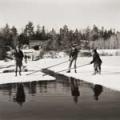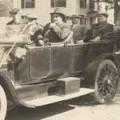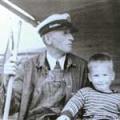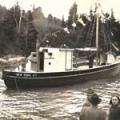History

Ice Time in Rockport
An old-fashioned ice harvest

Thurza Foss and Her Photos from Harmony
Left with a farm to run and a family to feed, an early 20th-century woman created photo postcards that offer a glimpse into rural living in northern Maine.

When Cattle Pounds Kept Strays at Bay
In rural Maine, the town cattle pound helped keep the peace.

Friends on a Winter Day in Rockport
A snowy 1949 scene from Maine photographer Kosti Ruohomaa.

Mildred Burrage’s War
A Maine artist’s volunteer efforts and posters helped to make World War II shipbuilding work in South Portland safer for women laborers.

Campaigning 1913 Style: William Jennings Bryan
A political tour by automobile

A Stonington Sea Captain’s Legacy
Attic treasures provide a new glimpse into the life of a Stonington sea captain

When Lynn Lugged the Lobsters
A three-generation Long Island seafood company relied on what is believed to be the last Maine-built lobster smack and a pair of retired and refit naval vessels to deliver downeast lobsters to New Yorkers

A World War I Sailor’s Journal Documents the Armistice
A seaman’s journal tells of the day the fighting stopped, marking the end of World War I

Husking Corn, Farmington, Maine
A glimpse back at Maine's harvest season






